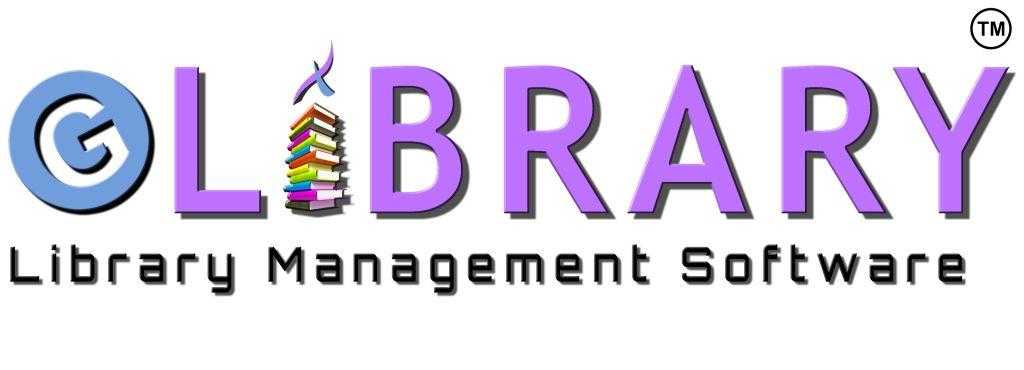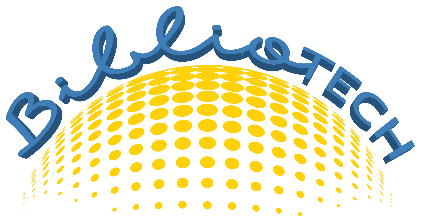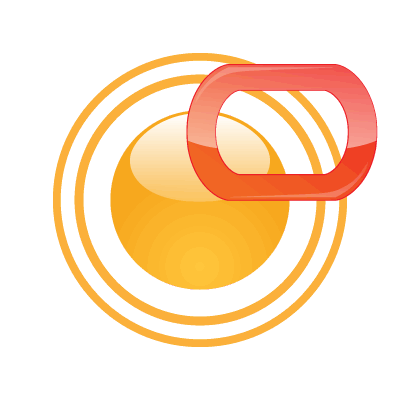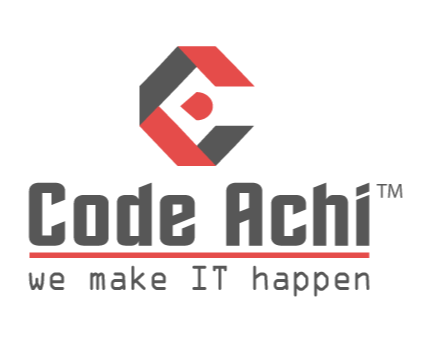What Is Library Automation Software?
Library automation software, often known as library management system or LMS, is a comprehensive and user-friendly tool for managing and streamlining various library activities. It is intended to automate common processes and increase overall efficiency in library administration. This digital solution not only simplifies the process of classifying and arranging collections, but it also includes advanced features like online search and resource tracking.
One of the key tasks of library automation software is to help with cataloging and classification of materials in the library's collection. This software allows librarians to properly and easily input information about books, journals, and other resources, making it easier for users to find and access materials. Furthermore, the software allows library personnel to customize data fields to meet their individual demands and organizational system.
Circulation management is an important part of library automation software. It streamlines the process of borrowing and returning books, maintaining circulation history, and handling overdue goods. This function enables library staff to keep track of materials, reduce human error, and offer reliable information on circulation trends and patterns.
Furthermore, library automation software features a user-friendly interface that enables consumers to search and access library resources from any location, at any time. Users can search for content using a variety of parameters, including title, author, subject, or keyword, making it easier to find the resources they need quickly. This software also has comprehensive tracking and monitoring features that enable libraries to keep track of resource usage, trends, and demand.
It can provide reports that help library workers make educated decisions about collection management and resource allocation. Furthermore, library automation software provides the possibility of integrating with other web databases, allowing libraries to access a diverse range of digital content. This feature increases the availability of relevant and current resources for library patrons.
What Are The Recent Trends In Library Automation Software?
In recent years, library automation software has witnessed considerable breakthroughs and developments to keep up with the changing digital landscape of libraries. These developments have significantly improved the productivity, user experience, and general functioning of library automation software. One of the most notable trends in library automation software is the move to cloud-based solutions.
This enables libraries to access their systems and data remotely, reducing the need for expensive and time-consuming on-site installations. Cloud-based automation software improves libraries' flexibility, scalability, and security. Another development in library automation software is the incorporation of artificial intelligence (AI) and machine learning technology. These innovations enable smarter cataloging, predictive analytics, and personalized suggestions to library users.
AI-powered automation software can also help with operations like collection management, demand forecasting, and more. The rise of open-source software has had an impact on the library automation business, allowing libraries to benefit from free and configurable automation solutions. This tendency has resulted in more collaboration and community-driven development, resulting in ever-improving and cost-effective library software solutions.
Mobile-friendly and user-friendly interfaces have become essential components of library automation software. With the advent of smartphones and tablets, consumers expect to be able to access library materials and services from their mobile devices. As a result, library automation software vendors are providing mobile-responsive designs and mobile applications to facilitate access to library collections and services.
Finally, the growing emphasis on data analytics and usage statistics has resulted in the incorporation of reporting and data visualization elements into library automation software. Libraries may now measure and evaluate resource usage to make more informed decisions regarding collections, services, and user needs.
Benefits Of Using Library Automation Software
Library automation software is a game-changing technology that has transformed how libraries operate. It automates numerous library procedures, including cataloging, circulation, and collection administration. This not only saves time and effort, but it also frees up library staff to focus on more vital activities like delivering exceptional customer service and improving the library's general operations.
These are the advantages of utilizing library automation software in depth, giving you all the information you need to make an informed decision for your library
1. Increased Efficiency And Productivity: Using library automation software provides considerable benefits in terms of efficiency and productivity. Automation allows librarians to accomplish activities like cataloging and book circulation with a few clicks, saving them time and effort. This allows them to concentrate on more important activities, such as expanding the library's collection and offering better services to clients.
2. Improved Accuracy And Data Integrity: Manual data entry is susceptible to human mistake, resulting in inaccurate and untrustworthy data. However, with library automation software, all data is entered and handled electronically, greatly lowering the possibility of errors. This improves data accuracy and integrity, allowing patrons to obtain accurate and up-to-date information.
3. Improved Collection Management: Library automation software includes powerful tools for organizing and managing a library's collection. It gives librarians the tools they need to manage their collections effectively, from managing inventory and book circulation to preparing reports and evaluating usage data. This not only improves the library's overall operations, but also aids in making data-driven decisions about future collection development.
4. Improved User Experience: In today's digital world, library users expect a smooth and user-friendly experience while using library services. Libraries can use automation to provide online catalog access and self-checkout alternatives, allowing patrons to browse for and check out books without waiting in line. This not only enhances the user experience, but also boosts customer happiness and loyalty.
5. Cost Savings: Although library automation software requires an initial investment, it can lead to significant long-term cost savings. Libraries can save money on labor by automating functions like data entry and book circulation. It also aids in the effective management of the library's collection, lowering the need for repeat purchases and saving money on lost or misplaced books.
Important Factors To Consider While Purchasing Library Automation Software?
When selecting the best library automation software for your school, there are various variables to consider to ensure an informed conclusion.
Here are some crucial aspects to consider while selecting library automation software:
1. Needs Assessment: The first step in choosing library automation software is determining your institution's particular requirements and goals. Consider your collection's material categories, number of users, and budget limits. This will allow you to narrow down your selections and select software that matches your needs.
2. User-Friendly Interface: Both library personnel and patrons should find the software's interface easy to use. It should have powerful search capabilities, flexible layouts, and user-friendly workflows to boost efficiency and user satisfaction.
3. Integration Capabilities: It is critical to select software that is compatible with your current library administration systems, including as cataloging and circulation modules. This provides a smooth transition with minimal disturbance to your library's operations.
4. Assistance And Training: Look for a software provider who provides thorough assistance and training to guarantee that the program is implemented and used successfully. This could include user guides, online tutorials, and access to technical help.
5. Protection And Data Privacy: Because libraries handle sensitive information, it is critical to select software that prioritizes data protection and confidentiality. Ensure that the software includes built-in security features and meets industry and legal data protection standards.
6. Scalability: A library's collection and user base will grow over time, thus it is critical to select software that can accommodate this development. Consider your future needs and select software that can scale up to meet them.
7. Cost: While cost should not be the only determining factor, it is critical to examine the entire cost of software ownership. This includes not only the initial cost, but also any further maintenance, support, and update payments.
8. User Feedback And References: Before making a final decision, examine evaluations and feedback from other institutions that use the software. You can also ask the software vendor for references from current clients to gain a better understanding of their product and support services.
By taking these crucial elements into account when selecting library automation software, you may choose a system that will fit your institution's needs, increase efficiency, and improve the overall user experience. Take the time to conduct extensive study and analyze many possibilities to choose the greatest fit for your library.
What Are The Key Features To Look For In Library Automation Software?
When it comes to choosing the proper Library Automation Software for your library, there are a few crucial things to consider. These features will not only serve to streamline your library's everyday operations, but will also enhance your patrons' overall experience.
Here are the key features to look for in Library Automation Software:
1. Integrated Cataloging System: The heart of any library is its catalog, and excellent automation software should include an integrated cataloging system. Look for software that allows you to simply import and update bibliographic entries, add metadata, and personalize search results.
2. User Management: A library's software should include sophisticated user management features that allow you to track patron data, issue and return books, and handle fines and fees. It should also allow you to create and manage various user profiles, including those for students, professors, and external members.
3. Circulation And Inventory Management: The software should include capabilities that improve the circulation and inventory management operations. This features barcode scanning for faster check-in/check-out, real-time inventory updates, and warnings for overdue items.
4. Online Public Access Catalog (OPAC): An OPAC is a vital tool that allows users to easily and efficiently discover library materials. Look for software that offers a user-friendly and customized OPAC complete with extensive search capabilities, book covers, and availability information.
5. Multilingual Support: If your library serves a diverse community, choose software that supports different languages. This will improve the accessibility and user experience for all patrons.
6. Integration With eBooks And Digital Resources: In today's digital landscape, it's critical to have software that works seamlessly with eBooks and other digital assets. This will make it easier for customers to find and borrow digital materials.
7. Reports And Analytics: To properly manage your library, you must have access to real-time data and reports. A good software should provide detailed statistics and analytics on circulation, inventory, and user data to assist you in making informed decisions.
8. Mobile Accessibility: In this day and age, library software must be mobile-friendly. Patrons will be able to access the catalog, place requests, and manage their accounts on the move.
9. Technical Assistance: Look for a vendor who provides full technical assistance and regular software updates. This will keep your software up to date and any technical difficulties resolved quickly. When choosing Library Automation Software, consider these essential qualities to choose a solution that matches your library's specific demands while also providing an exceptional user experience for customers. Remember to conduct research, compare choices, and get advice from other libraries in order to make an informed decision.
Why Do Businesses Need Library Automation Software?
Businesses want library automation software because it improves the management and organization of their libraries. This software automates processes including cataloguing, circulation, and inventory management, saving firms time and money. It also provides a unified system for monitoring resource status and availability, allowing organizations to make more educated purchasing, lending, and budgeting decisions.
Furthermore, library automation software provides comprehensive reporting and analytics capabilities, allowing organizations to obtain insights into their library usage and assess its overall influence on their organization. This not only increases efficiency, but also enables firms to make data-driven decisions about resource allocation and cost-cutting strategies.
Furthermore, the software provides self-service choices for customers, allowing businesses to incorporate contemporary technology and improve the entire user experience. In today's digital age, library automation software is critical for businesses that want to manage their library operations efficiently and effectively.
How Much Time Is Required To Implement Library Automation Software?
The time required to deploy library automation software varies substantially based on the software selected, the library's size, and the level of customization necessary. In most circumstances, the process can last from a few weeks to several months. First and foremost, it is critical to recognize that deploying a new software system necessitates extensive planning and preparation.
This normally includes doing a thorough assessment of your library's requirements, establishing software goals and objectives, and producing a detailed implementation plan. This initial phase can last anywhere from a few weeks to a couple of months, depending on the intricacy of your library's operations. Once the planning and preparation stages are completed, the real implementation process can begin.
This usually includes installing and configuring the software, importing data from old systems, and teaching employees on how to use the new software. The length of this phase varies depending on the size and scope of the library, but it often lasts a few weeks to several months. It is crucial to note that the implementation process may require some level of modification, especially for larger libraries with more sophisticated requirements.
This may cause the implementation date to be extended because additional development and testing are required. Overall, the implementation process for library automation software can take anywhere from a few weeks to several months, depending on each library's unique needs and circumstances. Libraries must plan and prepare properly to enable a seamless and effective deployment.
What Is The Level Of Customization Available In Library Automation Software?
Library automation software is a valuable tool for managing resources, streamlining operations, and increasing overall efficiency. The level of customisation available with this software is one of its most notable characteristics. Different libraries have distinct needs and requirements, and having software that can meet these specific needs is critical. In this article, we'll look at the level of customisation available in library automation software and explain how it might aid your library.
First and foremost, it is crucial to understand that library automation software has a variety of features and modules that can be tailored to your library's workflow. This comprises cataloguing, circulation, acquisitions, serials, and other services. You can select only the modules that are relevant to your library and configure them based on your individual needs.
Aside from the modules, the interface and appearance of the software can be adjusted to meet the needs of your library personnel. This comprises the layout, colours, typefaces, and overall theme of the software. This not only improves the user experience but also establishes your library's distinct character. Another feature that can be altered in library automation software is integration with other systems.
Most libraries already have established systems in place, such as a learning management system or a digital repository. The software can be modified to interact smoothly with various systems, resulting in a more efficient workflow and improved resource management. Customization extends to the software's reporting capabilities. Libraries have varying reporting requirements, and the software can be set up to provide reports that are relevant and valuable to your library.
This can contain circulation statistics, collection utilization, and other information to assist you make educated library decisions. Furthermore, most library automation software allows for flexibility in deployment. You can select whether to host the program on-premises or in the cloud. This allows you to select the option that best fits your library's infrastructure and budget.
Which Industries Can Benefit The Most From Library Automation Software?
Library automation software is an invaluable tool that can benefit a wide range of enterprises. Its features and capabilities are intended to improve and streamline library operations, making it an invaluable tool to any company that oversees a big collection of resources and information.
Let's look at which sectors can benefit most from library automation software.
1. Educational Institutions: From elementary schools to universities, educational institutions have a tremendous number of resources that must be adequately collected, catalogued, and maintained. Library automation software can help to streamline these operations, making it easier for staff and students to find and use the materials they require.
2. Public Libraries: Public libraries act as a nexus for information and resources in a community. Keeping track of a diverse collection of resources, such as books, e-books, DVDs, and more, can be difficult. Inventory management, circulation, and cataloging can all be simplified by library automation software, saving librarians time while providing a better user experience for customers.
3. Corporate Organizations: Many businesses maintain their own libraries, which house valuable resources such as training materials, manuals, and industry-specific publications. Corporate organizations may simply organize and track these documents with library automation software, allowing employees to obtain the information they require.
4. Government Agencies: Government entities frequently have huge collections of papers and resources that must be organized and handled effectively. Library automation software can assist organizations in keeping track of their records and providing simple access to crucial materials for staff and the public.
5. Law Firms: Law firms deal with a large number of legal documents and resources that must be organized and readily available. Library automation software can assist expedite the management of these resources, freeing up lawyers and their staff to focus on providing the finest legal services to clients.
6. Medical Facilities: In the healthcare industry, quick and easy access to current medical materials is critical. Library automation software can assist medical facilities manage their collections more successfully, making it easier for doctors, nurses, and other healthcare professionals to locate the information they require.
Conclusion
To summarize, selecting the correct library automation software is an important decision for any library. It not only simplifies operations and increases efficiency, but it also improves the overall user experience and frees up librarians' time for more vital work. When selecting library automation software, consider budget, features, integrations, support, and scalability. Libraries can find the ideal solution that matches their specific requirements by assessing these variables and devoting time to researching and demoing various software solutions.
It is also important to involve key stakeholders and solicit their comments to verify that the chosen software is in line with the library's aims and objectives. Regular software updates and continuous maintenance should also be addressed to ensure the software's long-term success and satisfaction. Following these guidelines and carefully examining all issues allows libraries to make an informed selection and confidently select the finest library automation software for their institution.






















